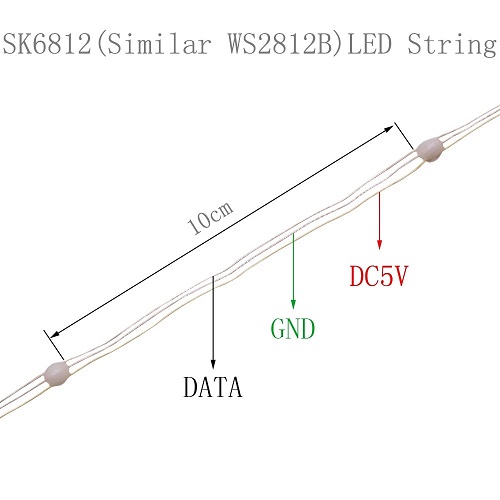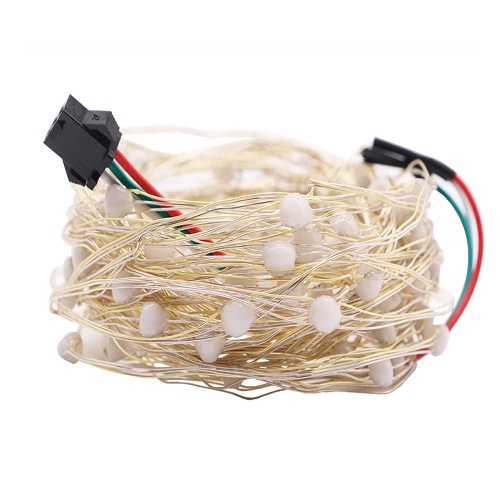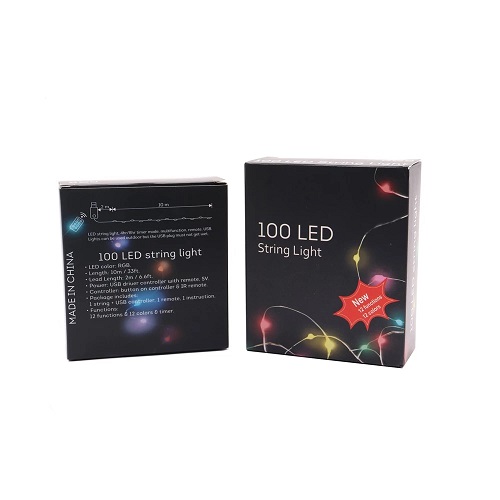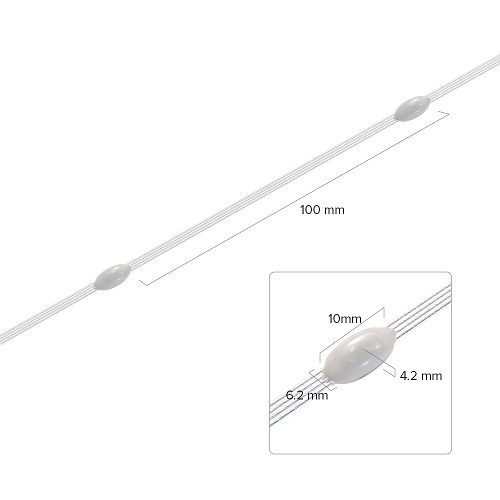@Booli, the fixed-address fairy lights are usually advertised as “SK6812”, they’re connected by 3 copper wires, and all of mine have come with the same packaging:



Two definitive ways to tell that they have fixed addresses are:
- The strings sometimes come from the shop with non-zero starting addresses.
I have one 100-LED strand that responds to addresses 20-119; I noticed because end-to-end chaser patterns like KITT or Cylon would disappear off one end and change directions before reaching the other end. - If you cut the string and wire the sections in parallel like @scruffynerf did, they still respond to the same addresses.
Signs that a fairy light string is NOT fixed address – that it follows the normal WS2812B addressing protocol – include:
-
Four connecting wires to each LED:

-
Three connecting wires, but each LED has four pins:

-
Three wires, but each LED is mounted on a carrier board with separate Data-In and Data-Out pins:
